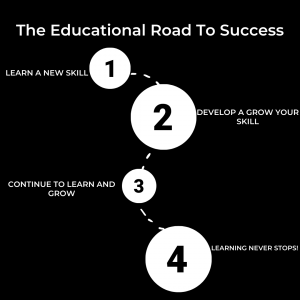How Tech Is Changing How We Learn: Exploring Innovations in Education
Technology is rapidly transforming the landscape of education and reshaping how individuals acquire knowledge. The integration of digital tools and resources has made learning more accessible, personalized, and efficient than ever before. From online courses to interactive apps, learners can engage with content that aligns with their interests and pace, creating a more tailored educational experience.
As society continues to embrace these advancements, traditional classroom settings are evolving. Virtual classrooms and remote learning platforms enable education to reach a broader audience, breaking down geographical barriers. This shift not only fosters inclusivity but also encourages lifelong learning by allowing individuals to pursue new skills at their convenience.
The convergence of education and technology is not just enhancing the way knowledge is delivered; it is also fostering collaboration and innovation. Students can connect with peers and experts worldwide, encouraging diverse perspectives and approaches to problem-solving. This collaborative environment prepares learners for a dynamic world where adaptability and tech-savviness are essential.
The Integration of Technology in Education
Technology has significantly transformed education by enhancing accessibility and personalization in learning experiences. Key developments such as e-learning platforms, artificial intelligence, and virtual reality are reshaping how students acquire new skills.
E-Learning Platforms and Online Courses
E-learning platforms have revolutionized traditional education, making it more accessible. These platforms deliver courses from esteemed institutions worldwide, allowing students to learn at their own pace.
Key features include:
- Flexible Scheduling: Learners can access materials anytime.
- Diverse Course Offerings: Topics range from coding to photography.
- Cost-Effective Learning: Many online courses are more affordable than in-person classes.
Platforms like Coursera, Udemy, and Khan Academy provide rich resources that cater to various learning preferences, enhancing motivation and engagement.
Artificial Intelligence in Personalized Learning
Artificial intelligence (AI) plays a vital role in creating personalized learning experiences. By analyzing data on student performance, AI can tailor educational content to meet individual needs.
Benefits include:
- Adaptive Learning Paths: Students progress at their own speed.
- Instant Feedback: Immediate assessment allows for timely adjustments in study methods.
- Enhanced Engagement: Interactive tools keep learners motivated.
Institutions are increasingly adopting AI technologies, such as an intelligent tutoring system and a chatbot for colleges, to provide students with instant guidance and support. These tools can answer questions, assist with administrative tasks, and offer personalized recommendations, helping learners navigate their educational journey more effectively. By combining such AI-driven insights with on-demand assistance, students can enjoy a more seamless and tailored learning experience.
Virtual Reality and Immersive Learning
Virtual reality (VR) offers immersive learning experiences that traditional methods cannot replicate. This technology creates engaging environments where students can explore complex subjects interactively.
Applications of VR in education include:
- Simulated Science Labs: Students conduct experiments in safe, controlled settings.
- Virtual Field Trips: Learners visit historical sites or explore ecosystems from the classroom.
- Skill Development: Hands-on training in areas like the medical field or engineering.
These experiences promote active learning, enhancing retention and understanding of material. By integrating VR, institutions can prepare students for a rapidly evolving future.
Impacts of Tech on Learning Experience
Technology has significantly transformed the learning experience by altering attention spans and fostering collaborative environments. It has also raised important health considerations related to increased screen time and its effects on learners.
Changing Attention Spans and Engagement
The integration of technology into education has reshaped attention spans. Students often find it challenging to maintain focus with the constant influx of information.
Research indicates that the average attention span has decreased, leading to a need for shorter, more engaging content.
Effective strategies to enhance engagement can include:
- Interactive quizzes
- Multimedia presentations
- Gamified learning experiences
These elements can boost attention and motivation, making learning more enjoyable. Nevertheless, educators must balance tech usage to avoid fostering distractions.
Collaborative Learning Environments
Technology facilitates collaborative learning environments, enabling students to work together regardless of location. Online platforms allow for real-time collaboration, enhancing social learning opportunities.
Tools like Google Workspace or Microsoft Teams provide features such as:
- Shared documents
- Video conferencing
- Discussion forums
These technologies encourage peer interaction and knowledge sharing, critical for skill development. They also promote critical thinking and problem-solving through group projects.
However, the effectiveness of these platforms depends on their thoughtful implementation within the curriculum to maximize benefits.
Health Considerations of Increased Screen Time
Increased screen time associated with educational technology poses health risks that warrant consideration. Prolonged exposure can lead to:
- Eye strain
- Sleep disruption
- Physical inactivity
Educators and parents should monitor daily screen time to ensure it remains within recommended limits. Incorporating regular breaks and encouraging alternative learning methods can mitigate these health concerns.
Promoting a balanced approach to technology will help maintain students’ well-being while still benefiting from innovative learning tools.
Economic and Societal Aspects
The integration of technology in education significantly impacts both economic and societal frameworks. Educational technology influences investment strategies and shapes workforce skills, aligning them with modern industry demands.
Investment in Educational Technology
Investment in educational technology has surged in recent years. Businesses and governments recognize its potential to enhance learning outcomes, stimulate innovation, and drive economic growth.
- Venture Capital: The edtech sector has attracted substantial venture capital, facilitating the development of new learning tools and platforms.
- Government Funding: Initiatives also include public funding to ensure equitable access to technology in schools.
This focus fosters a competitive environment for startups and established companies, leading to the development of more effective and engaging educational resources. Enhanced learning experiences contribute to a skilled workforce, which is essential for sustaining economic advancement.
Industry Demands and Skill Development
Today’s industries require a workforce adept in technology and critical thinking. Educational institutions must evolve to provide relevant training that meets these demands.
- Curriculum Alignment: Many programs are updating curricula to include technical skills, such as coding and data analysis.
- Partnerships: Collaborations between businesses and educational institutions are increasing, creating opportunities for internships and real-world projects.
These initiatives ensure that students develop skills that are directly applicable in the workforce. This alignment between education and industry prepares graduates to meet the evolving job market, thus enhancing employability and supporting economic growth.


